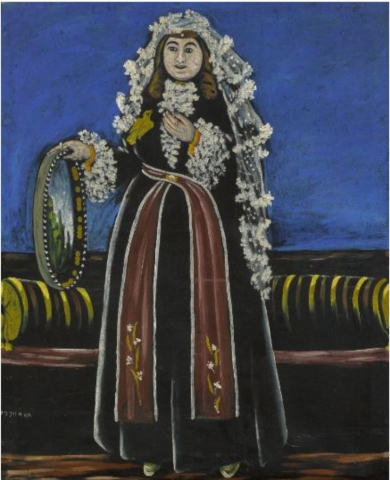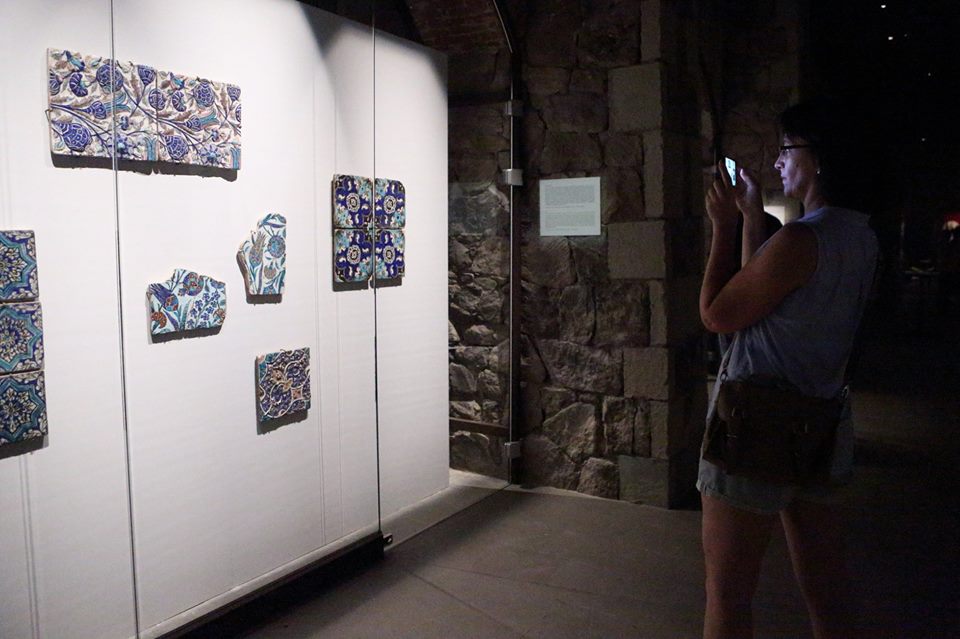While Georgia is far from international standards of acceptance and adaptation for those of physical disability, progress is being slowly made. Check out Georgia's wheelchair friendly museums below.
TBILISI
THE SIMON JANASHIA GEORGIAN MUSEUM (MUSEUM OF GEORGIA)
3 Rustaveli Ave.
TEL (+995) 299 80 22
Founded in 1852, it offers unique exhibits from the history of both nature and Mankind, including the remains of animals dating back 40 million years, archaeological finds, and ethnographic collections from the Paleolithic, Neolithic, Bronze, Iron and Middle Ages. The recently renovated museum features both permanent and temporary exhibitions.
ARCHEOLOGICAL TREASURE
This exhibition of the Georgian Museum of History features pieces of goldsmithry discovered in Georgia and dated from the 3rd Millennium B.C. to the 4th Century A.D. The collection includes over 600 pieces of Georgian goldwork including gold and silver adornments such as diadems, earrings, bracelets, necklaces and rings, statues, weapons, and more.
EXHIBITION STONE AGE GEORGIA
A stunning display of animal bones, and skulls dating back to the first 'Man'. All exhibits in Georgian and English
GEORGIAN WEAPONRY
This exhibition features over 150 pieces of Georgian weaponry from the 17th-20th centuries, including swords, daggers, guns, pistols, and more.
THE CAUCASUS NATURAL HISTORY MUSEUM COLLECTION RENEWED EXHIBITION

This collection was started in 1852 and was further enriched in 1866 -1903 with extensive zoological, botanical, geological and ethnographic collections from the Caucasus and other regions of the world.
THE ORIENTAL COLLECTIONS
Museum visitors have an opportunity to see significant examples of the Orient, featuring up to 180 objects of Egyptian, Islamic and Far Eastern culture, including an Egyptian mummy and sarcophagus, an 8th century page of the Koran on oil paper, examples of easel, miniature and lacquer painting, metal and ceramic dishes, objects of ritual meaning, adorned battle weapons of precious metal and more.
NUMISMATIC TREASURY
An exhibition showcasing the long history of money circulation on the territory of Georgia from the 6th century BC. to 1834. All exhibits in Georgian and English.
SOVIET OCCUPATION
Discover the State's personal files of "subversive" Georgian public figures, orders to shoot or exile, and other artifacts representing Soviet-era cultural and political repression in Georgia. Most exhibits in Georgian and English or Russian.
THE NATIONAL GALLERY

11 Rustaveli Ave.
TEL (+995) 215 73 00
Founded in 1920, and in 2007 merged with the Georgian National Museum, the gallery has eight exhibition halls, a souvenir shop, a laboratory, a warehouse for storing temporary exhibitions, and a study hall. The project was developed by the Portuguese architectural company Ainda Arquitectura.
20TH CENTURY GEORGIAN ARTISTS
Visitors can see 30 artworks by Niko Pirosmanashvili demonstrating the diversity of the artist’s creative genre and theme, David Kakabadze’s works showcasing his art from the beginning of his career to the 1940s, and Lado Gudiashvili’s art from the early period of his creative life and continuing to the years he spent in Paris. The central hall displays six sculptures by famous Georgian sculptor Iakob Nikoladze, including “Wind,” “Woman from the North,” and “Chakhrukhadze,” as well as photo materials from his house-museum and information about his projects around the city.
TBILISI HISTORY MUSEUM
8 Sioni Str.
TEL (+995) 298 22 81
The Tbilisi History Museum was founded in 1910 and since 1984 has been located in a restored caravanserai, representing the city's historic role as a Silk Road trading outpost.
ZURAB TSERETELI MUSEUM OF MODERN ART
27 Rustaveli Ave.
TEL (+995) 298 60 30
OPEN: 11 AM - 7 PM daily except Tuesday
SVANETI

7 A. Ioseliani Str., Mestia
TEL (+995) 215 73 00
The Svaneti Museum of History and Ethnography is located in north-western Georgia, in the recently-renovated capital city of the Svaneti region, Mestia. Established in 1936 as a Local Museum, in 2013 the new museum was opened in a modern building (architect Gaga Kiknadze) according to international standards. It offers temporary exhibitions, a unique permanent exposition, an educational center and media library.
The Museum preserves items of Christian treasure, including 9th-18th century masterpieces of world importance such as: the Icon of the Forty Sebastian Martyrs, an embroidered Byzantine icon, a Venetian Cross, a jug gifted by Queen Tamar, and the earliest remaining sample of illustrated manuscript- the Adishi Gospels (897). Visitors can also enjoy an exhibition of Georgian ethnography.
KAKHETI
SIGHNAGHI MUSEUM
8 Rustaveli Cul-de-sac, Sighnaghi
TEL (+995) 223 24 48
Located in the regional capital of Kakheti, the Museum was founded in 1947, joined by the Painting Gallery in 1967. It keeps around sixty thousand ethnographic, numismatic (two thousand coins), photo and documentary, and archeological exhibits. On the second floor, visitors can find the permanent exhibition of the Georgian self-taught artist of the late 19th-early 20th century, Niko Pirosmanashvili, often known simply as Pirosmani. The second floor also hosts numerous temporary exhibitions throughout the year. This hall hosted a Picasso exhibition in 2009 and a Western European exhibition in 2010.
SAMTSKHE-JAVAKHETI
THE DMANISI MUSEUM-RESERVE
Patara Dmanisi Village, Dmanisi district
TEL (+995) 299 80 22
Get closer to science and visit the Dmanisi Museum-Reserve, 85 km to the southwest of Tbilisi-a unique place featuring stunning discoveries that are rewriting human history and transforming our view of human evolution. Recent finds in Dmanisi represent the oldest evidence of humans discovered outside of Africa, dating back 1.8 million years.
Comprising both the ruins of a medieval city and the prehistoric archaeological site, visitors can enjoy guided tours of the picturesque fortress and ruins that cover the ancient deposits, and watch archaeologists excavate new discoveries.
THE SAMTSKHE-JAVAKHETI MUSEUM

1, P. Kharischirashvili Str., Rabat Fortress, Akhalsikhe
TEL (+995) 299 71 76
The Samtskhe-Javakheti Museum is located in the southern part of Georgia. It was established as an archive-museum in 1923. In 1937, it was converted into a museum of local history, and it now offers a collection of more than 25 thousand artifacts, among them manuscripts and early printed materials, Georgian lapidary (jewel-working) and woven carpets.
